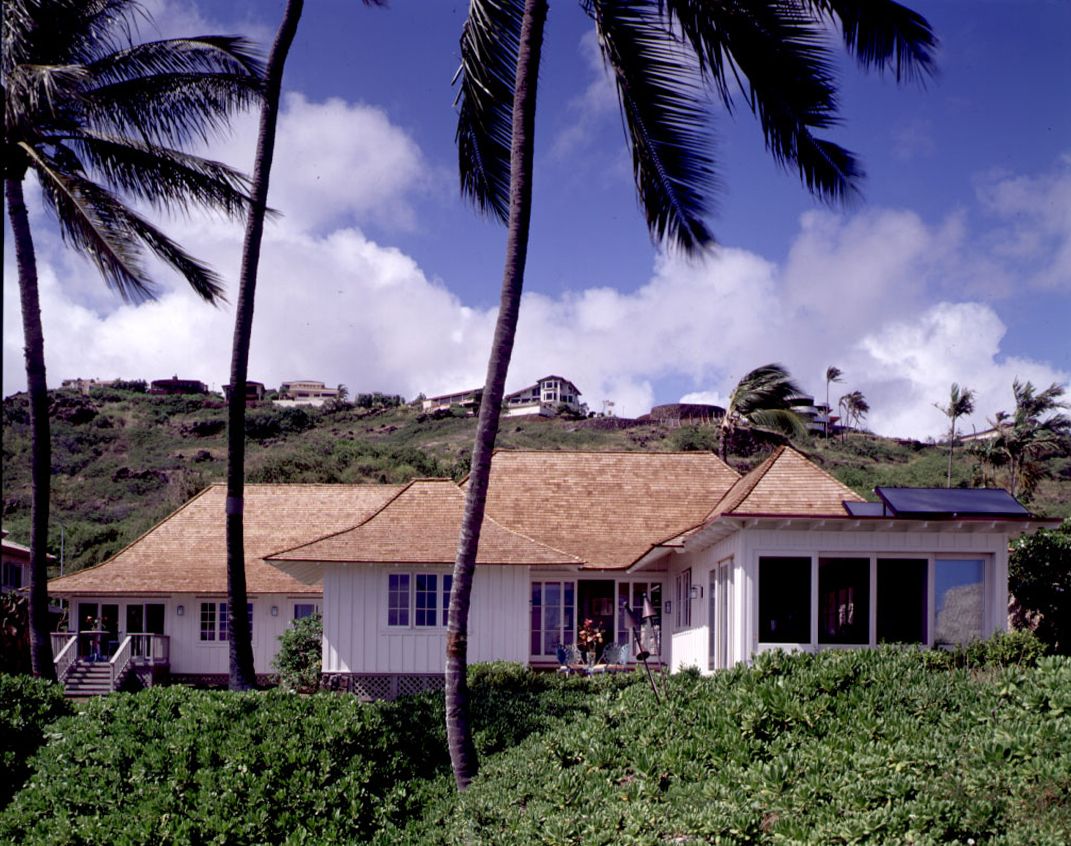We know, we know: “Hawaii? In the winter? Tough assignment, guys.” We got those comments all the time, but when we chose the Aloha State for our winter 1994 project, we didn’t go for the luaus. Even in paradise, we headed straight for the jobsite, Christiane Bintliff’s 1930s ocean-front bungalow at Niu on the island of Oahu. We found that our preference for historic preservation, Yankee craftsmanship, and modern materials and techniques made a good fit in Hawaii, where the architectural past is fast disappearing.
Christiane quickly disabused us of the idea that nothing can go wrong among the swaying palms and gentle surf, as she revealed that the realities of life on an island are not always so glorious. From rampant termites to the threat of hurricanes to the high cost of shipping supplies from the mainland, Hawaiian homeowners face a array of challenges that go unmentioned in guidebooks.
We wanted to help Bintliff preserve an invaluable piece of personal and island history. Her home stood on land given to Alexander Adams, her great-great-grandfather, in 1850, by Hawaii’s King Kamehameha III. Adams, as admiral of the Royal Hawaiian Navy, had come into the king’s favor through his years of service, which included his defense of the island of Kauai in a battle with the Russian navy. The king granted Adams an ahupua’a—a land division stretching from the mountain to the sea—as a reward, and Christiane’s home was on the last remaining parcel of ocean-front land. “He was apparently a very colorful man,” Christiane told us. “He also brought the mango to Hawaii, on a voyage from India.”
The elements had been having their way with Christiane’s home for a long time, and there was plenty of work to be done. “Before This Old House came along,” she said, “I had a structural engineer tell me that the house was not worth salvaging. I figured I could squeeze maybe 10 more years out of it, then I’d have to tear it down and start again.” But award-winning architect Norman Lacayo and Honolulu-based contractor Jack Ching approached the restoration with sensitivity, preserving as much of the original structure as possible while restoring the remainder with historic accuracy.
“It’s really a little jewel,” Lacayo said of the house. “We restore houses like this for our kids to be able to see what Hawaii was like.”
Lacayo designed and Ching Construction built an addition that respected the traditional architecture of the main house, improved the layout of the kitchen and master suite to take better advantage of the ocean view, and employed the latest techniques in hurricane-resistant construction. A defunct solar unit was replaced by a state-of-the-art system, providing the house with much of its hot water. The lanai, a kind of outdoor room, was outfitted with comfortable built-in seating and movable screens to let in the breezes and keep out the occasional passing shower. The house was tented and gassed to rid it—if only for a time—of its resident termites, who love Hawaii’s climate for some of the same reasons people do.
We accentuated one of the house’s most beautiful features—its distinctive double-hip roof—by replacing its old asphalt shingles with true-to-style red cedar shingles. Getting the shingles from the mainland to the jobsite was but one example of the challenges of working in Hawaii. Roland Lagareta was Ching Construction’s contract supervisor: “Long-lead items are things any contractor worries about, but here in Hawaii they represent a particular investment in time simply because you’re waiting for the next boat in—which, with on- and off-loading, as well as actual travel time, generally means 10 to 14 days. And that’s just from the west coast. Clearly, you can’t afford to make mistakes.”
Fortunately, we were in good hands, and Christiane’s little piece of Hawaiian history was restored just in time for the wrap party—our long-awaited luau.
Other project highlights included visits to Hawaiian landmarks like the USS Arizona Memorial at Pearl Harbor; Iolani Palace, the country’s only royal palace; Diamond Head; the 1927 Royal Hawaiian Hotel; an ancient Hawaiian temple, or heiau, on the island of Maui; the National Memorial Cemetery; Hawaii Volcanoes National Park; and St. Philomena’s Church on Molokai, where in the late 1800s Father Damien ministered to quarantined victims of leprosy, now known as Hansen’s disease.

